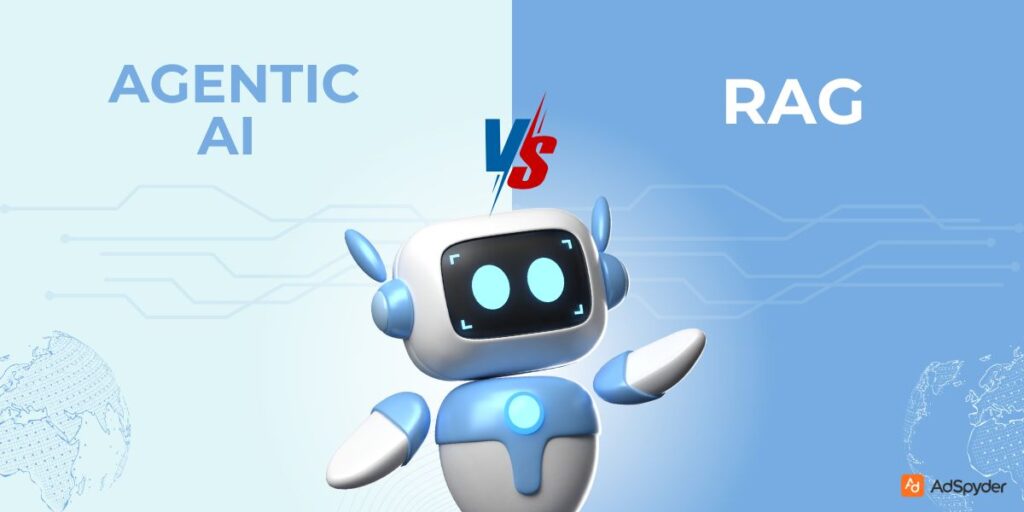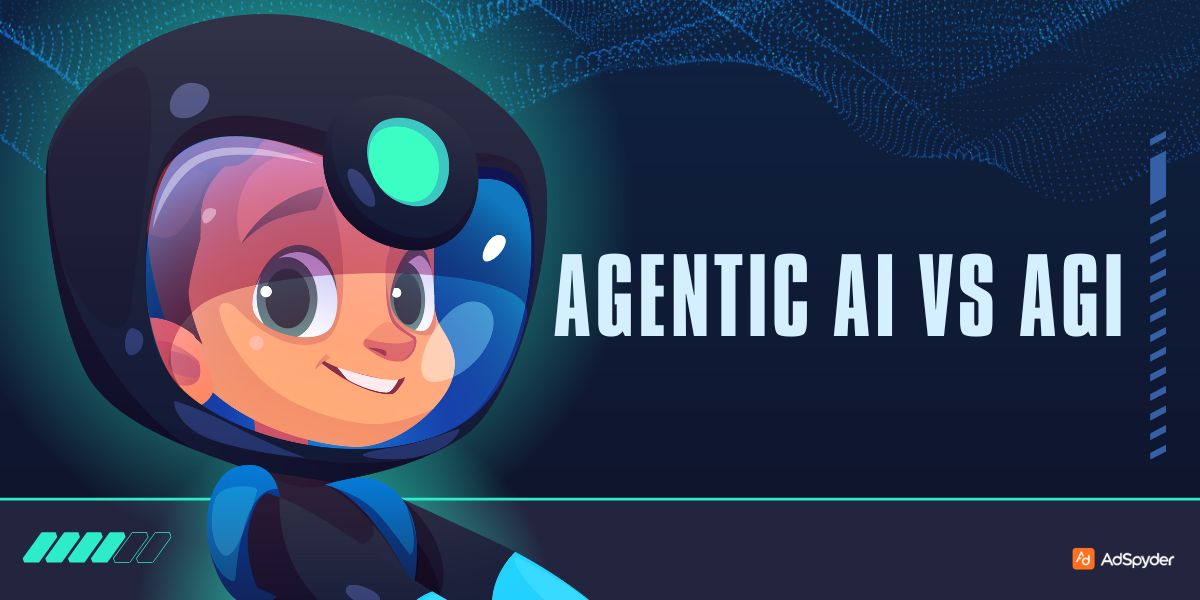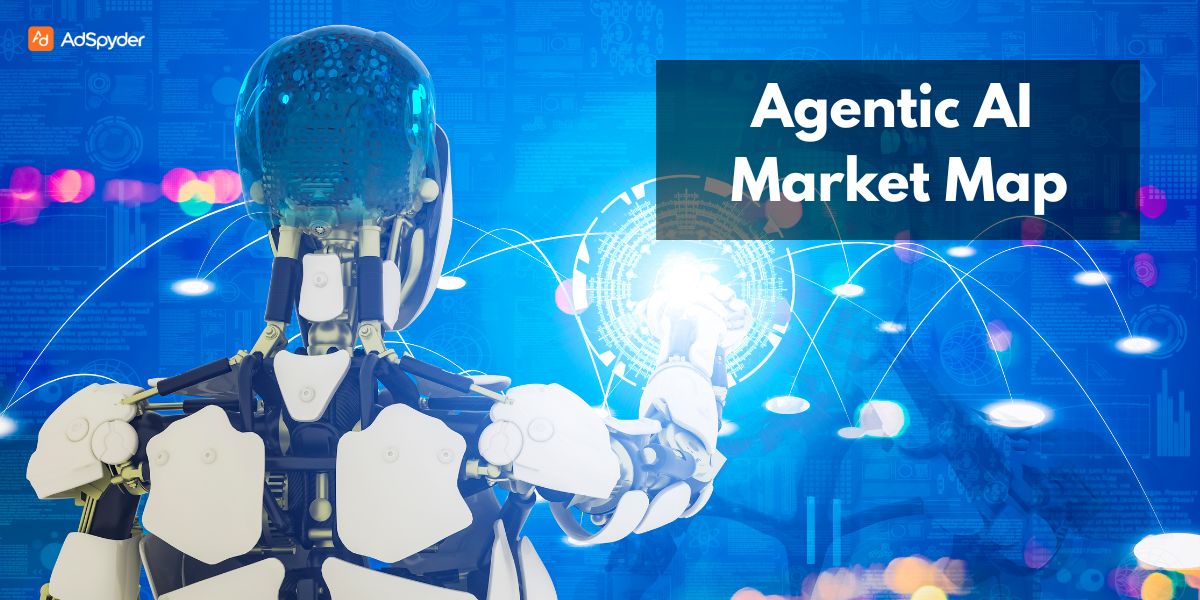As artificial intelligence systems evolve beyond chat-based Q&A and into workflow automation, two powerful design patterns have taken center stage: Agentic AI and Retrieval-Augmented Generation (RAG). Although they often appear together in modern AI architectures, these two paradigms serve very different roles. One focuses on finding the right information, the other on achieving the right outcome. In this post, we’ll explore how Agentic AI vs RAG compare, how they can work together, and when to use one—or both.
Ready to Elevate your Marketing Strategy?
What is RAG?
Retrieval-Augmented Generation (RAG) is a technique that combines two components:
- Retriever: A system (often based on vector search or keyword matching) that pulls relevant documents from a knowledge base.
- Generator: A large language model (LLM) that uses the retrieved documents as context to produce more accurate, grounded responses.
RAG is commonly used in:
- Chatbots trained on proprietary documents
- Internal knowledge assistants
- Legal and compliance Q&A systems
Strengths of RAG:
- Improves the factual accuracy of LLMs
- Keeps outputs grounded in company-specific knowledge
- Avoids model hallucination when well-tuned
- Supports real-time updates via document ingestion
What is Agentic AI?
Agentic AI is a broader architecture that focuses on task completion and goal-driven behavior. These systems use language models not just to respond, but to interpret instructions, plan actions, invoke tools, and adapt based on results.
Where RAG answers questions, Agentic AI does the work—from making decisions to executing workflows across systems.
Core Features of Agentic AI:
- Multi-step planning
- Dynamic tool and API usage
- Memory and context tracking
- Reflection and retry mechanisms
- Task ownership and execution
Related – Agentic AI vs LLMs
Key Differences at a Glance
| Feature | RAG | Agentic AI |
| Purpose | Improve knowledge retrieval | Complete user-defined tasks |
| Core Function | Retrieve → Generate | Plan → Act → Reflect |
| Input Type | Questions or search-like prompts | Goals, tasks, instructions |
| Tools Used | Vector search, retrievers | APIs, databases, external actions |
| Execution | Stateless generation | Stateful, iterative task loops |
| Autonomy | None | High (agents operate with feedback) |
Example Scenario: Enterprise Support Assistant
User Query:
“Help me understand our refund policy and issue a refund to the customer from the CRM.”
RAG System Response:
“According to our refund policy: Customers are eligible within 30 days of purchase… [details from policy doc].”
(Informative, but passive)
Agentic AI Behavior:
- Retrieves the refund policy (possibly using RAG)
- Checks CRM for eligibility
- Issues the refund using the billing API
- Sends confirmation to the customer
(Informative + executed action)
Insight: RAG informs. Agentic AI informs and acts.
Check Out – Agentic AI vs Traditional AI
Can Agentic AI Use RAG?
Yes—frequently. RAG is often embedded inside agentic workflows as a retrieval tool. For instance:
- A sales agent might use RAG to surface pricing documents.
- A legal agent might use RAG to fetch clauses or contracts.
- A coding agent might retrieve docs or repos before writing or deploying.
In these cases, RAG becomes one tool in the agent’s toolbox, used as needed based on task context.
When to Use Each
| Use Case | Best Fit |
| Answering policy questions | RAG |
| Finding product documentation | RAG |
| Triaging and resolving support tickets | Agentic AI (+ RAG) |
| Executing multi-step business workflows | Agentic AI |
| Internal search assistants | RAG |
| Automated task completion | Agentic AI |
Final Thoughts for Agentic AI vs RAG
RAG and Agentic AI serve complementary roles in modern AI systems.
- RAG helps your model know more.
- Agentic AI helps your system do more.
Together, they form the basis of powerful AI agents that are both knowledgeable and capable—offering users not just information, but outcomes.
Check Out – Agentic AI vs Generative AI
FAQs for Agentic AI vs RAG
What is the core difference between Agentic AI and RAG?
RAG enhances an LLM’s knowledge by retrieving relevant documents to ground its response. Agentic AI uses planning, tool use, and execution to act on user intent and complete tasks.
Can Agentic AI systems include RAG?
Yes. RAG is often integrated as a component within Agentic AI systems—used for knowledge retrieval before taking further action.
Is RAG a form of Agentic AI?
No. RAG improves information quality but doesn’t involve planning or autonomy. It’s a retrieval strategy, not a decision-making or action-taking system.
When should I use RAG over Agentic AI?
Use RAG when your goal is to provide accurate, grounded responses to queries—especially from internal documents or proprietary content.
When is Agentic AI the better choice?
Use Agentic AI when you want the system to interpret, plan, and execute multi-step actions based on user goals—not just answer questions.
What tools are commonly used in RAG systems?
Typical components include vector stores (e.g., FAISS, Pinecone), retrievers (BM25, dense embedding search), and an LLM like GPT-4 for response generation.
Does RAG require constant retraining of the LLM?
No. RAG avoids the need to fine-tune models by feeding updated context at runtime through retrieval—making it ideal for dynamic knowledge bases.
Is Agentic AI stateless like RAG?
No. Agentic AI often maintains session memory or long-term state across multiple interactions or steps—allowing agents to adapt and retry.
Do both RAG and Agentic AI rely on LLMs?
Yes, both use LLMs for reasoning and generation. RAG feeds documents into the LLM, while Agentic AI adds control layers for task execution.
Can RAG systems be upgraded to Agentic AI?
Yes. A RAG system can be extended with planning, tool invocation, and feedback handling to evolve into an agentic workflow—moving from retrieval to full automation.




